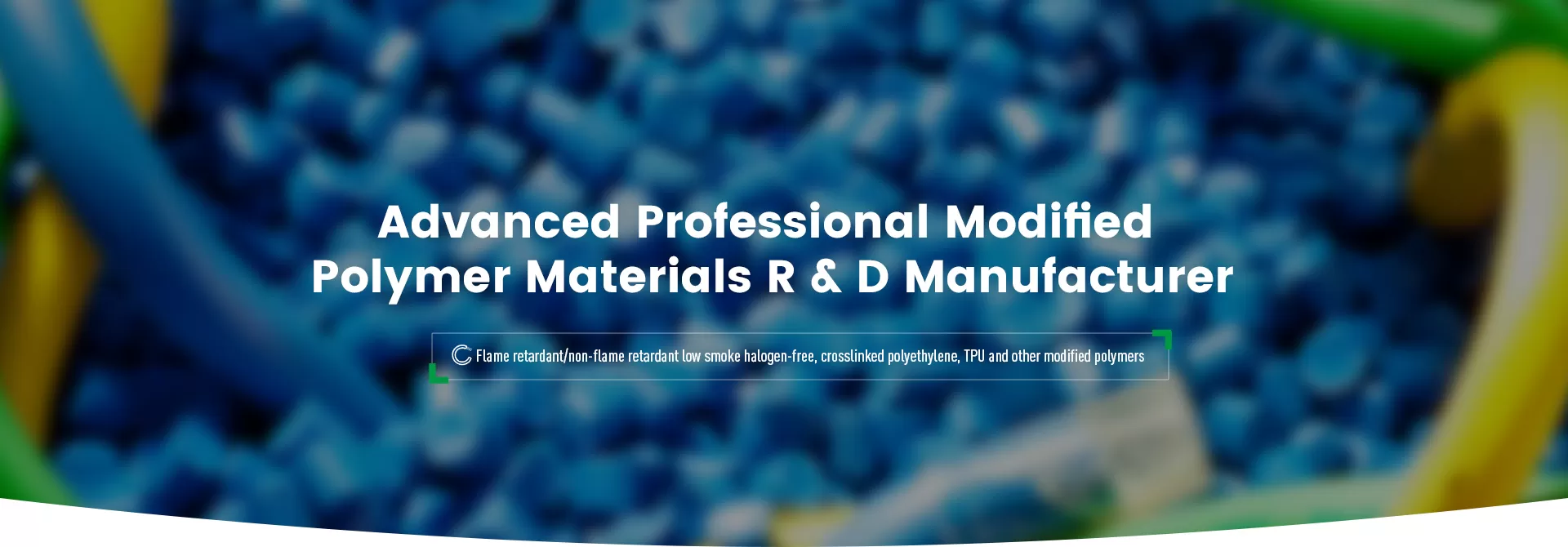

This product is made of polymer resin as the base material, with cross-linking agent, antioxidant and other additives added, and then mixed and plasticized and granulated. It does not contain harmful substances such as heavy metals, and has excellent mechanical properties, electrical properties and wide processing temperature margin.
Application Areas
Applicable to photovoltaic cable insulation materials that meet the waterproof performance indicators in EN 50618:2014, IEC 62930, and 2PFG2750.
Cross-linked polyethylene XLPE insulation is a specially treated polyethylene material that transforms polyethylene molecules from a linear structure to a mesh structure through chemical or physical methods, thereby significantly improving its heat resistance, mechanical properties and electrical properties.
Heat resistance: XLPE has excellent heat resistance and can be used for a long time in an environment up to 90°C, and can even withstand temperatures up to 250°C in a short circuit without losing its performance.
Insulation performance: XLPE maintains the original good insulation properties of polyethylene, with high insulation resistance, small dielectric loss tangent value, and little temperature effect, which allows XLPE cables to operate at higher voltages.
Mechanical properties: XLPE has improved hardness, stiffness, wear resistance and impact resistance, which makes XLPE materials better able to resist cracking caused by environmental stress.
Chemical resistance: XLPE has strong acid, alkali and oil resistance, and its combustion products are mainly water and carbon dioxide, which has less harm to the environment and meets the requirements of modern fire safety.
Electrical properties: XLPE has excellent electrical properties, including high insulation resistivity and low dielectric loss, which make XLPE cables more efficient in power transmission.
Environmental adaptability: XLPE cables are suitable for various environmental conditions, including harsh climates and chemical environments, and are therefore widely used in indoor and outdoor power transmission.
Processing performance: XLPE materials can be processed into cable insulation layers through extrusion processes and have good processing performance.
Application areas: XLPE insulation materials are widely used in power cables, communication cables, control cables, and environments that require heat resistance and chemical corrosion resistance.
Due to these characteristics of XLPE, it has become an important insulating material in cable manufacturing, especially in the application of high-voltage and ultra-high-voltage cables.
XLPE insulated cables have become one of the main choices for power transmission and distribution due to their excellent comprehensive performance.
| No. | Testing Items | VALUE | Typicalval | UNIT | Method |
| 1 | Density(20℃) | -- | 1.15 | g/cm3 | GB/T 1033 |
| 2 | Tensile Strength | ≥10 | 14.5 | MPa | GB/T 1040.2 |
| 3 | Elongation at break | ≥200 | 340 | % | GB/T 1040.2 |
| 4 | Hot extension 250℃,0.2Mpa,15min | ||||
| The elongation rate under load | ≤100 | 50 | % | GB/T 2951.21 | |
| Permanent rate of change after cooling | ≤15 | 0 | % | ||
| 5 | heat deterioration 150±2℃, 168h | ||||
| Rate of change in the tensile strength | ≤±30 | 12 | % | GB/T 2951.12 | |
| Rate of change of fracture elongation | ≤±30 | -10 | % | GB/T 2951.12 | |
| 6 | Impact brittlement temperature(-40 ºC) | ≤15/30 | 0/30 | GB/T 5470 | |
| 7 | Volume resistivity(20ºC) | ≥1.0×1013 | 1.5×1013 | Ω·m | GB/T 1410 |
| 8 | Volume resistivity(90ºC) | ≥1.0×1010 | 2.5×1010 | Ω·m | GB/T 1410 |
| 9 | Dielectric strength(20ºC) | ≥20 | 30 | MV/m | GB/T 1408.1 |
| 10 | Water resistance AD8 | ||||
| Tensile strength after 100 days of immersion in water | ≥5 | 8 | MPa | GB/T 1040.2 | |
| The rate of change in tensile strength after 28/100 days of immersion | ≤±15 | -10 | % | GB/T 2951.12 | |
| Elongation at break after 100 days of immersion in water | ≥175 | 195 | % | GB/T 1040.2 | |
| The rate of change ofelongation at break after 28/100 days of immersion | ≤±20 | -13 | % | GB/T 2951.12 | |
| 11 | Resistant to damp heat 90℃ relative humidity 85%, 1000h | ||||
| Rate of change in the tensile strength | ≤-30 | -18 | % | EN60068-2-78 | |
| Rate of change of fracture elongation | ≤-30 | -19 | % | EN60068-2-78 | |
| 12 | HCl and HBr gas releases | ≤2 | 0 | mg/g | GB/T17650 |
| 13 | Combustion gas PH | ≥4.3 | 5.8 | / | GB/T17650 |
| 14 | Combustion gas conductivity | ≤10 | 5 | μs/mm | GB/T17650 |